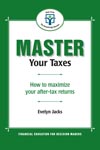Last updated: May 11 2011
Planning is Important For Taxpayers
How much does the average Canadian family pay in taxes each year? The Fraser Institute published the annual Canadian Consumer Tax Index in April, and the findings are not pretty. Since the Institute began documenting this statistic in 1961, the total tax bill has increased by 1686%! When expressed in 2010 dollars, the inflation-adjusted tax bill drops to 140.07% of the 1961 level. The annual tax expenditure has grown more than any other category of expense, including food, clothing and shelter. Spending on taxes has overtaken the Consumer Price Index, a measurement of the average price that Canadians pay for a representative basket of goods and services. It is interesting to note that Statistics Canada just announced that the mix of goods in that basket is being revised to better represent the kinds of things that Canadians currently buy.
The Canadian Consumer Tax Index includes a variety of taxes and expenditures when calculating the annual tax bill. This may change from year to year as new taxes are added or deleted, and the makeup of the average family is adjusted as well. Taxes include income tax, EI and CPP contributions, property tax, user fees, business taxes passed on to customers and consumer tax such as provincial sales tax, duty, GST and HST. In 1961, the average household income was $5000, and $1675 or 33.5% was paid in taxes. Fast forward to 2010, when the average household took in a cool $72,393, and gave back $29,913 in taxes. That is 41.3% of income paid out in taxes, and most governments are operating in a deficit position which means that the taxes collected are not even covering current expenditures, let alone debt!
If you think of a budget deficit as deferred taxation, and include these annual deficits in the tax burden, the total tax bill for the average Canadian family (not adjusted for inflation) has increased by a whopping 1987% since 1961! What does this mean? According to the Fraser Institute, in 2010 the average Canadian family spent 34% of income on the necessities of life, and 41% was paid in taxes. Compare that to 1961, when 56.5% of income earned put a roof over your head and food on the table, and the government collected 33.5% in taxes.
We all pay taxes in order to ensure that programs, services and infrastructure are maintained for all Canadians. However, no-one should pay more income tax than he or she has to by law. Don't you think that money in the hands of the taxpayer is just as important as government spending for a healthy, prosperous nation? Your tax return is a snapshot of your financial health. Take the time to examine it each year and be sure to seek professional guidance when you have questions or concerns. Canadians must embrace financial literacy in order to regain control of their tax liability, their budgets and their futures ñ take action now!
ADDITIONAL EDUCATIONAL RESOURCES: Master Your Taxes

